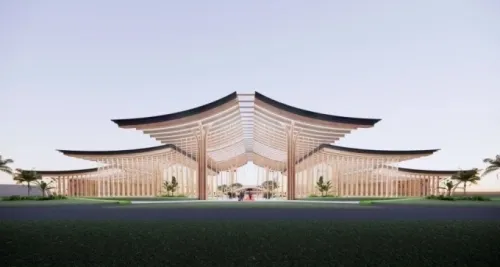Vietnam eyes 10% GDP growth rate by 2030
The government targets GDP growth of at least 10% each year from 2026-2030, when it expects the country’s economy to be the third largest in Southeast Asia.
With GDP per capita of around $8,500 by then it also expects the country to be among the 30 largest global economies, Deputy Prime Minister Nguyen Hoa Binh said at the first Congress of the Government Party Organization for 2025-30 in Hanoi on Monday.
Vietnam’s GDP is projected to reach $510 billion this year, placing it 32nd globally, five places up from five years ago.
The per capita income is expected to rise to over $5,000 by year-end. It was $3,552 in 2020.
Economic growth is expected to exceed 8% this year, laying the foundation for double-digit growth in subsequent years.
Trade has increased steadily, and is projected to reach a record $850 billion this year, making Vietnam one of the 20 biggest global trading nations.
Over the next five years the government plans to develop a modern national education system aligned with regional and global standards, with the goal being to produce high-quality human resources.
Infrastructure will be modernized and synchronized, with urban areas driving regional growth and continued investment in new rural development.
Science, technology, innovation, and digital transformation will be key drivers, positioning Vietnam among leaders in upper-middle-income nations.
"Inflation will be controlled, ensuring public debt, government debt, foreign debt, and budget deficits remain within allowable limits," the Deputy PM said, adding that new growth drivers, including digital transformation, green transition, circular economy, and emerging sectors, will be prioritized.
He said that the public sector would continue to lead and guide the national economy but have the private sector as a vital driver.
Foreign direct investment will be selectively attracted, focusing on technology transfer.
The government also plans to complete 5,000 kilometers of expressways by 2030 and operationalize the coastal highway, the Lao Cai–Hanoi–Hai Phong railway, and urban rail systems in Hanoi (100 km) and Ho Chi Minh City (100 km).
For human resources, the government will prioritize high-quality talent development to international standards, particularly in key industries and 11 strategic technology sectors.
Breakthrough policies for science and technology will be accelerated to make the digital economy grow enough to contribute at least 30% of GDP by 2030.
At the opening of the meeting, Prime Minister Pham Minh Chinh noted that "the country has achieved significant milestones in various fields," with results improving each year.
In 2026–30 term global conditions are expected to remain complex, with more risks than opportunities, and called for breakthrough solutions to maintain economic stability, control inflation and consistently achieve GDP growth of 10% or more for many years.
Source: Son Ha
Photo: VnExpress/Quynh Tran





